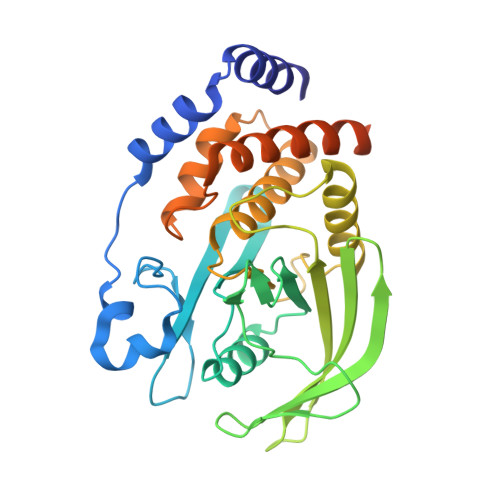Structural characterization of a pathogenic mutant of human protein tyrosine phosphatase PTPN2 (Cys216Gly) that causes very early onset autoimmune enteropathy.
Nian, Q., Berthelet, J., Parlato, M., Mechaly, A.E., Liu, R., Dupret, J.M., Cerf-Bensussan, N., Haouz, A., Rodrigues Lima, F.(2022) Protein Sci 31: 538-544
- PubMed: 34806245
- DOI: https://doi.org/10.1002/pro.4246
- Primary Citation of Related Structures:
6ZZ4 - PubMed Abstract:
PTPN2 is an important protein tyrosine phosphatase (PTP) that plays a key role in cell signaling. Deletions or inactivating mutations of PTPN2 have been described in different pathologies and underline its critical role in hematopoiesis, autoimmunity, and inflammation. Surprisingly, despite the major pathophysiological implications of PTPN2, the structural analysis of this PTP and notably of its pathogenic mutants remains poorly documented. Contrary to other human PTP enzymes, to date, only one structure of PTPN2 (wild-type form) has been reported. Here, we report the first crystal structure of a pathogenic mutant of PTPN2 (Cys216Gly) that causes an autoimmune enteropathy. We show in particular that this mutant adopts a classical PTP fold. More importantly, albeit inactive, the mutant retains its ability to bind substrates and to adopt the characteristic catalytically competent closed form of PTP enzymes. This novel PTPN2 structure may serve as a new tool to better understand PTP structures and the structural impacts of pathogenic mutations. Moreover, the C216G PTPN2 structure could also be helpful to design specific ligands/inhibitors.
- Department of Blood Transfusion, Sichuan Provincial People's Hospital, University of Electronic Science and Technology of China and Chinese Academy of Sciences Sichuan Translational Medicine Research Hospital, Chengdu, China.
Organizational Affiliation:

















